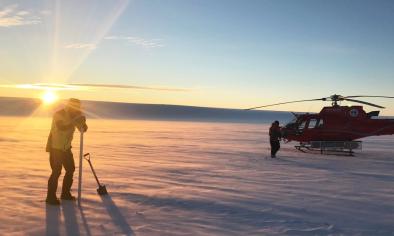Science Source
Stability of the Larsen B ice shelf on the Antarctic Peninsula during the Holocene epoch
- States that the stability of the Antarctic ice shelves in a warming climate has long been discussed, and the recent collapse of a significant part, over 12,500 km2 in area, of the Larsen ice shelf off the Antarctic Peninsula has led to a refocus toward the implications of ice shelf decay for the stability of Antarctica’s grounded ice
- States that some smaller Antarctic ice shelves have undergone periodic growth and decay over the past 11,000 yr (refs 7–11), but these ice shelves are at the climatic limit of ice shelf viability and are therefore expected to respond rapidly to natural climate variability at century to millennial scales
- Uses records of diatoms, detrital material and geochemical parameters from six marine sediment cores in the vicinity of the Larsen ice shelf to demonstrate that the recent collapse of the Larsen B ice shelf is unprecedented during the Holocene
- Infers from our oxygen isotope measurements in planktonic foraminifera that the Larsen B ice shelf has been thinning throughout the Holocene, and we suggest that the recent prolonged period of warming in the Antarctic Peninsula region, in combination with the long-term thinning, has led to collapse of the ice shelf
Related Content
Headline

Jan 29, 2020 | BBC News
Journey to the 'doomsday glacier'
Headline

Nov 22, 2019 | NOAA Climate.gov
Understanding climate: Antarctic sea ice extent
Headline

Mar 26, 2019 | The Guardian
Australian researchers find huge lakes beneath largest east Antarctic glacier
Science Source
| Geophysical Research Letters
Mass Loss of Totten and Moscow University Glaciers, East Antarctica, Using Regionally Optimized GRACE Mascons
Yara Mohajerani, Isabella Velicogna, Eric Rignot


